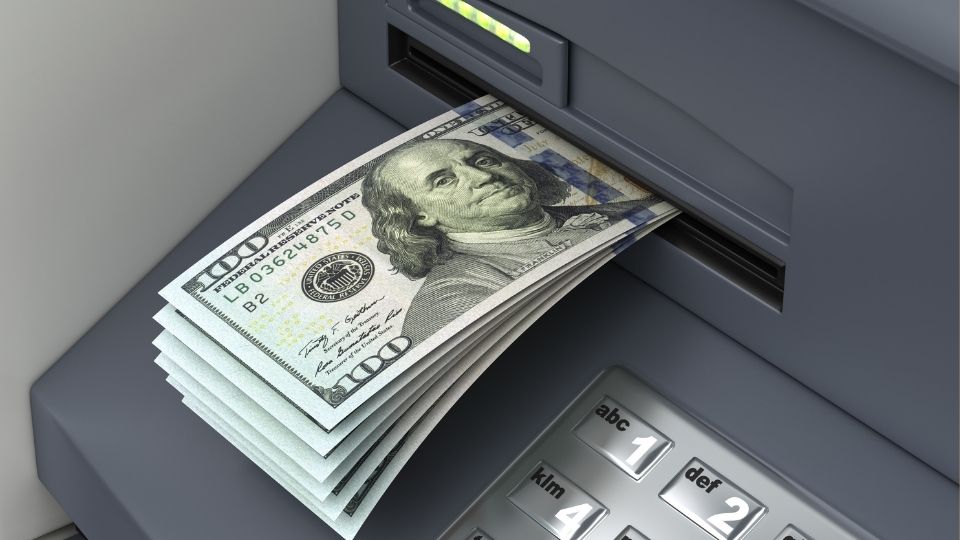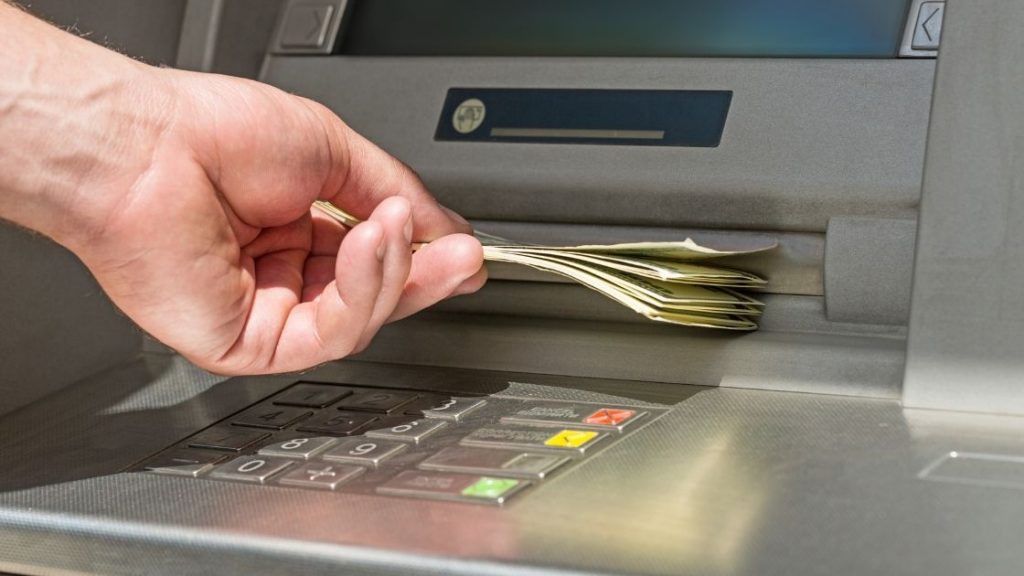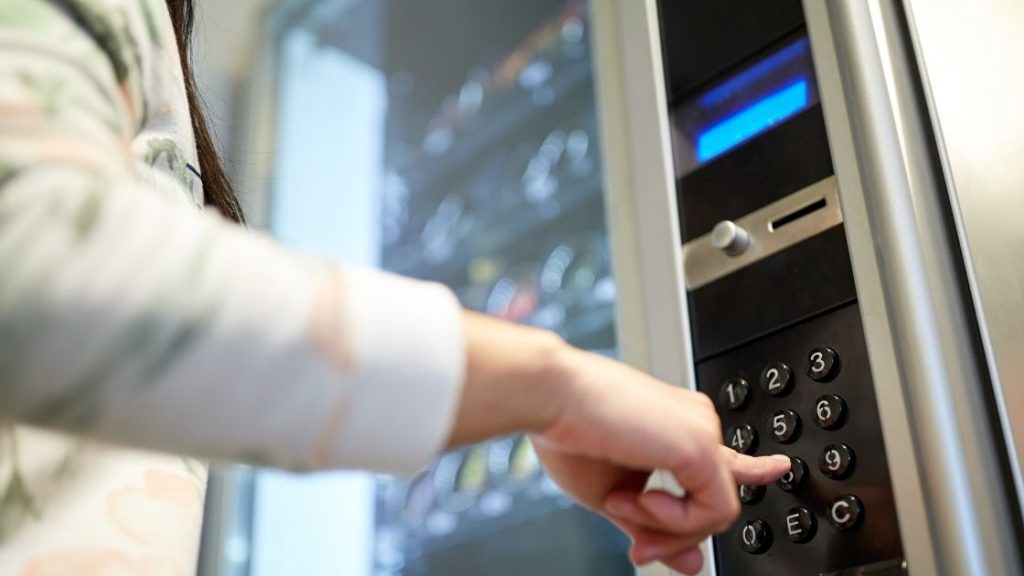We see ATMs everywhere. When you need cash in a hurry, they are really the only option, unless you have a bank branch nearby.
But did you know that many of those ATMs are owned by people like you and me?
I am not talking about those ATMs that are clearly affiliated with a big bank or financial institution. I am talking about those ATMs in convenience stores or gas stations that don’t have big bank branding all over them.
Turns out that these “independent” ATMs are a large part of the overall ATM marketplace. Of the 470,135 ATMs across the U.S., 278,394 are independent ATMs. That works out to 59.2% of the market.
Source: Akleg.gov
So, clearly, there is a huge market for independent operators of ATMs and a lot of money to be made in this space. But the real draw of operating an ATM business is its ability to provide passive income.
Those ATMs are going to continue to process transactions day in and day out (and make money for you on every transaction along the way) regardless of what you are doing. It is the classic example of making money in your sleep.
Pretty intriguing passive income strategy if you ask me.
In this beginner’s guide to the ATM business, we are going to cover four areas:
Part I: Introductory Questions on the ATM business (what is it? how profitable is it? etc.)
Part II: Starting and Running an ATM Business (including how to make it passive)
Part III: How to Buy an ATM Business (if you want a ready-made business)
Part IV: Pros and Cons of an ATM Business (to get a complete picture of what’s involved)
That’s a lot to cover, so let’s dive into it!
The information contained in this post is for informational purposes only. It is not a recommendation to buy or invest, and it is not financial, investment, legal, or tax advice. You should seek the advice of a qualified professional before making any investment or other decisions relating to the topics covered by this article.
What Is An ATM Business?
An ATM business is a business where one or more ATMs generate revenue for the business owner through fees charged to customers when they withdraw money from the ATMs.
Profitability of an ATM Business
Perhaps the most important factor when looking at any business is its profitability. The ATM business is no exception. We will cover some of the key questions you might have around the profitability of an ATM business.
How Do ATM Owners Make Money?
ATM owners make money from fees charged to customers when they make a withdrawal from an ATM.
The average fee charged by an ATM owner is around $3 (more details on this later) and is usually split between the ATM owner and the owner of the location where the ATM is situated.
The average split paid to location owners is between $0.50 and $1.00 per transaction. ATM owners may also make money through interchange fees, with the average interchange net income coming in at $0.10 to $0.20 per transaction.
Source: ATM Brokerage
What Is the Average ATM Surcharge Fee?
The average ATM surcharge from the ATM’s owner is $3.08. There are also charges imposed by the customer’s bank for “out of network” withdrawals, which are on average $1.56.
Source: Bankrate
So, every time someone makes a withdrawal from your ATM, you get approximately $3.00 in fees, which can add up pretty quickly if you have a decent number of transactions per month.
What Is the Average Number of ATM Transactions Per Month?
The average number of ATM transactions per month is 180, according to ATM Depot.
So we now know that the average fee is around $3 and the average transactions per month is 180. All of that begs the key question:
How Much Money Can You Make Owning an ATM Machine?
With an average ATM surcharge of approximately $3 per transaction and an average of 180 transactions per month, your monthly gross revenue can be $540 for each machine. That equals $6,480 per year.
Of course, these numbers are based on averages and your actual results may differ, but these numbers should give you a sense of what is possible.
And this is all for one machine. You can imagine the possibilities as you buy more.
Actually, no need to imagine. The New York Post wrote an article about this one guy that started with basically nothing and now owns 600 ATMs bringing in $240,000 per month. Amazing!
Is Owning an ATM a Good Investment?
Owning an ATM can be a good investment because the costs of buying an ATM are low compared to the potential returns that an ATM can generate. Based on average new ATM costs ($3,000) and average gross revenue per ATM ($540), the ROI can be upwards of 100% per year.
Here’s the math:
The average new ATM costs between $2,300 and $3,000.
Source: Lieberman Companies
As we just discussed, the average gross revenue can be $540 per month, which equals $6,480 per year. So if we paid $3,000 for the machine (which is on the high end) and made $6,480 in a year, the annual ROI, is over 200%.
Of course, we are ignoring the costs of doing business, such as revenue splits between the ATM owner and the location owner, costs of maintaining the machines, etc., but even if we split the gross revenue in half (which is very conservative, given the information on commission splits we shared earlier), the potential ROI stands at over 100% per year.
That’s just eye-popping.
Starting and Running an ATM Business

The first thing you need to do is set up your ATM business.
Selecting Name and Logo
This includes selecting a name and logo that you like and creating a website (if you want your business to have an online presence).
Having trouble figuring out a name? Try Shopify’s business name generator. It’s free.
As for a logo, I have zero artistic ability and limited tech skills, so I like a simple and easy to use option.
Looka will provide you a professional looking logo at reasonable prices. You can choose from hundreds of logo designs (based on parameters and preferences you select) before settling on one you like. You can also customize to your heart’s content. Check them out here.
Note: You want to make sure your name and logo are original to you and are not going to infringe someone else’s intellectual property. If you are unsure, you can check the USPTO’s trademark search tool as a starting point.
Setting Up Your Website
When it comes to your website, it does not have to be incredibly fancy or cost a lot of money to set up. There are a lot of resources available to help you with this.
In fact, Google allows you to build your first business website for free.
It is also important to get your new ATM business on Google. You can do this by listing it on Google My Business. This way, people who are searching for ATM services in your area can find you (imagine how great it would be if a local shop owner called you to supply an ATM in their location instead of the other way around?).
If you want to learn more about how to do this, check out this tutorial from Google.
Establishing Your Business Entity
If your business is going to be a corporation, LLC, or some other business entity, you should establish that as well. You can hire a lawyer to help you or you can use many of the online resources that can help you set up your business entity.
I like Northwest because they can get you up and running quickly and easily. They are also one of the most affordable options that I was able to find that still offered great customer service ($39 as of the date of this article).
According to their website, they are the only national registered agent service that lets you use their office address so you don’t have to use your own. That’s a killer privacy advantage.
Definitely worth checking out.

You should consult with your accountant and lawyer before taking this step, so you understand the tax and legal consequences of setting up this type of organization for your business.
Where Can I Buy ATM Machines?
After you take care of the initial set-up of your business you are going to need some ATM machines.
Pretty obvious, I know.
You can buy ATM machines from a number of companies that specialize in ATM sales. Some of the prominent sellers of ATMs include:
- ATM Money Machine
- ATM Brokerage
- Mobile Money
- ATM Machines
- ATM Mega Store
- Best Products Sales & Service
- eBay
You should look at the types of machines being offered and figure out which machine is right for you based on your budget, location, and strategy.
For example, if you are going to be targeting smaller businesses with less overall traffic, you may want to choose a machine that is less expensive and does not have as many bells and whistles. If your machine is going to be located outside or in a rough area, you may want a machine that has enhanced security features.
ATM Transaction Processing
An important part of your ATM business is making sure the withdrawals from your ATMs are properly processed. That means working with a reputable company that will process these transactions. These ATM processors serve as the critical link between your machines and the various payment networks, like VISA, Mastercard, NYCE, etc.
Many ATM processors also offer other services, including selling ATMs, repairing ATMs, providing software that tracks ATM transactions, and filling your ATMs with cash as needed.
For someone who prefers a one-stop-shop, a full-service ATM processor may be the right fit.
Some ATM processors will take a cut of your fees in exchange for providing processing services, while others will not. You will want to consider pricing, support, services offered, contract terms, and other factors that may be important to you before settling on an ATM processor.
Here is a list of ATM Processors:
What Is the Best Place To Put An ATM?
Location is going to be crucial to the success of your ATM business. As a rule of thumb, you want to focus on locations with high foot traffic.
Convenience stores and drug stores are the most popular locations for independent ATMs. Source: Akleg.gov
Other popular locations include gas stations, clubs, bars, hotels, office buildings, and cash-only establishments.
It is going to be very difficult to know exactly how a given location will perform. You should test out a location for a trial period of 3 months or so and see if it works. If it doesn’t, relocate that ATM to another location that may perform better.
When you are negotiating with the owner of the location, you should be upfront with them about your plan so there are no surprises down the road.
Don’t box yourself into a long-term contract with the site owner (at least at the beginning) because you may need the flexibility to pull out of a failing location.
Are ATMs Regulated?
The ATM business is regulated. Regulation E is the primary federal law governing ATMs. Reg E provides a basic framework that establishes the rights, liabilities, and responsibilities of participants in electronic funds transfer systems, like ATMs.
Source: Federal Reserve
Within Reg E, there are requirements around disclosure of fees charged to customers using ATMs.
ATM businesses are also impacted by the Bank Secrecy Act (BSA). The BSA is a law designed to prevent money laundering. It requires banks to adopt certain procedures to identify and stop this type of illegal activity.
Unfortunately, federal regulators view independent ATMs as a potential money laundering risk. Thus, your bank may perform due diligence on your business due to their Bank Secrecy Act requirements.
Source: FFIEC
Some banks may not want to face this type of regulatory scrutiny and may choose to avoid dealing with ATM businesses altogether.
That could make it hard to find a bank that will open a business checking account for your ATM business. You may have to overcome a lot of obstacles to get an account opened.
Finally, rules around adoption of EMV (or chip-enabled technology) also can impact your ATM business. In short, if your ATM is not chip-enabled, the liability for fraudulent transactions that happen on your machine may shift to you.
Source: Best Product Sales and Service
To avoid this, you may want to buy newer machines that are EMV enabled (or confirm that the older machines you are looking to purchase are EMV enabled).
There may be other requirements for starting or running an ATM business, including state or local regulations, so you should consult with your legal advisor to get a complete picture of the legal requirements for your situation.
How Often Are ATMs Refilled?
You will need to refill ATMs when their cash reserves run low. The exact frequency of refilling will be dictated by several factors, including the total cash capacity of the machine, the number of withdrawals from the machine, and how much you have available to deposit in the machine.
Most independent operators look to fill their machines no more than once per week.
Source: Connect ATM
Refilling your machines is going to be the most work intensive part of owning an ATM business. You also face safety risks when you are carrying around large amounts of cash to replenish your machines.
If you own only one or two ATMs and they are in safe locations, this will not be a big deal, but as you expand your business, refilling your machines will become a bigger drain on your time and energy.
Fortunately, there are ways to outsource this function. We’ll discuss that in more detail a bit later.
How Do I Maintain an ATM?
ATMs are usually pretty durable, but as with any machine, they will break down or needs repairs from time to time. Many companies will service ATMs, including local companies. Or if you want to get your machine serviced by a company with a national reach, you can do that as well.
The following are a list of companies that service ATMs across the US:
How Long Do ATMs Last?
ATMs are usually replaced every 9-10 years. That’s a pretty decent shelf-life and you should have more than made up for its cost during that time. You may also be able to depreciate your ATMs for tax purposes, which makes them that much more attractive as a passive income asset.
According to Pocketsense, Section 179 of the IRS Code allows an ATM owner to depreciate up to $19,500 for an ATM.
Of course, you should consult with your tax advisor to confirm the tax treatment of your ATMs.
How Much Does ATM Insurance Cost?
Because the ATM business deals with expensive equipment and a lot of cash, insurance coverage for your ATM business is worth considering.
Now I am not talking about general liability coverage for your ATM business – that seems to run between $400 and $700 per year for $1 million in general liability coverage.
When referring to ATM insurance, I am talking about insurance for damage to the machine and loss of the cash inside (due to theft, etc.). If you are interested in this type of insurance, I have collected some providers offering coverage in this space.
The following is a list of ATM insurance providers:
Unfortunately, none of these companies provides the cost of ATM insurance on their website. Like with other insurance pricing, you will need to contact them directly for specific quotes.
Can An ATM Business Be Truly Passive?
The only significant ongoing duties for your ATM business are making sure your machines work and refilling them with cash as needed.
Both functions can easily be outsourced.
We already covered how to maintain your machines. It is as simple as having a company or technician on hand to service your machines when they need attention.
The second, and more significant task of refilling machines with cash is one that many owners do themselves. But you don’t have to do this if you prefer a less hands-on approach.
A simple google search of “companies that will load cash into ATMs” provides a laundry list of companies that offer this service. And as I mentioned before, your ATM processor may also offer this service.
Of course, this service comes at a cost, but if you have grown into a large ATM business, the convenience of someone else servicing a large route may be worth the cost.
How Do I Buy An ATM Route?
If you want a ready-made business that already has great ATM locations and is making money, buying an existing ATM route may be a good choice for you.
The easiest way to buy an established ATM route is to go online.
The following are online platforms offering ATM routes for sale:
As with most business listings, you will find price, income, and other key metrics and information for the business. And just like any other business, you should conduct careful due diligence on the ATM business before you purchase it.
Pros and Cons of an ATM Machine Business
ATM businesses have their pros and cons. Let’s talk about the benefits first, and then tackle some of the risks and drawbacks of this business (including how to mitigate them).
Pros of an ATM Machine Business
The main benefits of an ATM machine business are: (i) low starting costs; (ii) potential for strong profits; (iii) passive income; (iv) independence; (v) and scalability
Low Starting Costs
As we touched on earlier, new ATMs run between $2,300 and $3,000. That’s a fairly low cost of entry for a new business, especially one that has such high profit potential.
Of course, you will need some money to put into the machines too, but again, we are not talking huge amounts of money (think around $2,000 on a rotating basis), especially if you are starting with one machine.
In case you are curious, the money that is withdrawn from your ATM machine is generally replenished the next business day into your bank account. The money is taken out of the customer’s bank account and ultimately deposited into your bank account.
Strong Profit Potential
We talked about the potential earnings numbers already, so I won’t go into that again. ATMs have the potential to generate significant profits for the business owner.
A handful of ATMs placed in great, high-traffic locations can yield terrific income for the owner.
Passive Income
We discussed how an ATM business can generate truly passive income if structured correctly. There are few things sweeter than getting paid while you sleep.
Independence
If you have your own business, you do not answer to anyone. Hard to put a price on that.
Growth Opportunities
Scaling an ATM business is very straightforward. Buy more machines and find great locations for them. There are really are no limits to how big you can grow your business.

Cons of an ATM Machine Business
The cons of an ATM business are (i) the decline of cash (ii) theft (iii) difficulty opening a bank account for an ATM business, and (iv) competition.
The Decline of Cash
Cash as a payment form has been in decline for years, but that decline has seemed to sharpen during the Covid-19 pandemic.
In the UK, for example, ATM transactions fell by 37% in 2020.
Source: The Guardian
Although no one can predict the future, the use of cash does seem to be under pressure as new payment technologies gain popularity.
That being said, there are plenty of people who are still using cash and who rely on ATMs to get that cash.
In fact, many of those using independent ATMs may be less inclined to stray from cash.
That’s because according to this study, people using independent ATMs tend to be less affluent, live in more rural areas, or may be part of the underserved banking population.
Given how difficult it may be for some of these underserved folks to have access to more modern payment technologies, cash may continue to be a vibrant payment method for years to come.
Theft
I hate to state such a painfully obvious point, but ATMs are filled with money. That makes them an appealing target for thieves. Thus, you want to make sure your ATMs have appropriate security features for their location.
You may also want to focus on safer locations to minimize the risk of theft.
Finally, make sure you have adequate ATM insurance as discussed earlier.
Opening A Bank Account for Your ATM Business Is Difficult
As we discussed earlier, banks may be hesitant to open bank accounts for ATM businesses because of regulatory pressure.
This can stop your ATM business in its tracks, so you need to find a bank that is willing to let you open up a bank account for your ATM business before you invest too much into the business.
Some of the smaller banks and credit unions may be more receptive than the big money center banks, so you can try them if you are not having much luck with the big banks.
Related reading: If you are having trouble opening a bank account for your ATM business or are worried about some of the other risks posed by an ATM business, you may want to consider a similar business, like vending machines. I wrote a complete guide to investing in vending machines for passive income that you may find interesting.
Competition
Like any business, ATM routes are competitive. You may find that ATMs already exist in most of the locations that you explore.
And if you have an existing location, one of your competitors may try to take that location away from you by offering the location owner a bigger split of the profits.
But most owners and managers at the locations where your machines are placed will reject a competitor’s offer if you are a good business partner with them. Keep your machines clean, working properly, and fully stocked. Make sure you are paying them a fair percentage of the machine proceeds.
Conclusion
ATM machines can be a terrific way to earn passive income and get out of the rat race.
But, as you can see by now, it’s not as simple as buying a few machines and waiting for the cash to come in. If you want lasting success, you must properly execute on the key things that go into running a profitable ATM machine route.
This includes buying the right machines, finding the right locations, having a reliable and great ATM processor, running efficient routes, and protecting yourself against the key risks involved in this business.
If you want more great passive income ideas, check out my ultimate beginner’s guide to passive income [25+ strategies that work], where I cover tons of effective strategies that generate passive income.
One of my favorite articles on passive income is my piece on businesses that run themselves. In that article, I cover some great businesses that can generate attractive levels of return without a lot of day to day involvement by the owner (obviously, ATMs are included in the list, but there are many more). Check it out here.
If you want to explore other great passive income ideas that may be less expensive (and less risky) than starting n ATM business, check out my article on 15 ways to make truly passive income with no money.

